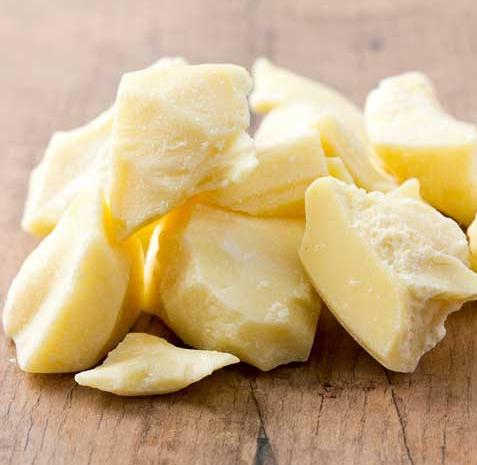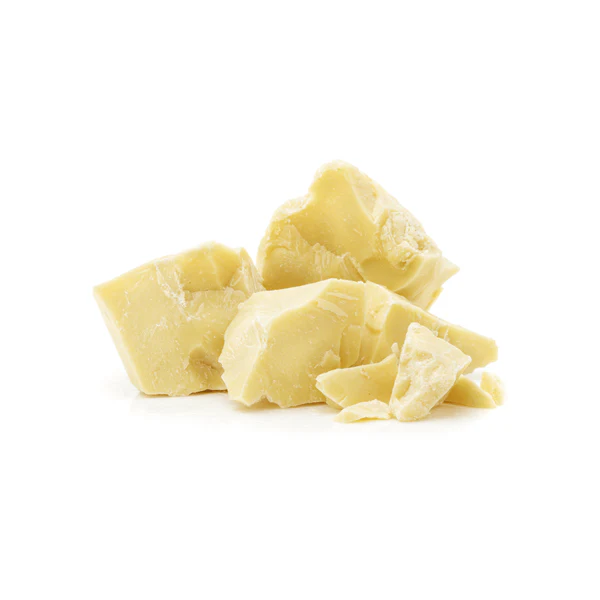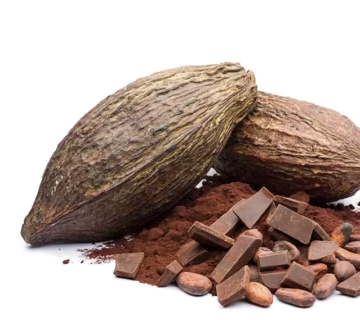In today’s competitive manufacturing landscape, every ingredient decision can have far-reaching implications for cost, quality, and production efficiency. Cocoa butter, the gold standard in chocolate, confectionery, cosmetics, and pharmaceuticals, offers exceptional melting behavior, texture, and flavor. However, due to its high cost and limited supply, many production facilities are turning to Cocoa Butter Equivalent (CBE)—an alternative fat designed to replicate cocoa butter’s functional properties while offering operational and economic advantages.
At MT Royal, we supply manufacturers with a comprehensive range of CBE and cocoa butter alternatives, ensuring consistent quality at competitive prices. We’ve seen production managers across industries benefit from smart substitution strategies that maintain product quality, streamline manufacturing, and optimize supply chains. In this article, we’ll explore everything you need to know about CBE—from fundamentals and benefits to practical implementation tips for large-scale industrial operations.
What Is Cocoa Butter Equivalent (CBE)?
CBE is a type of vegetable fat specifically formulated to mimic the physical and functional properties of cocoa butter. Unlike cocoa butter substitutes (CBS), which may only replicate flavor or texture, CBE is designed to maintain compatibility in chocolate, confectionery, and other applications where cocoa butter’s melting profile is critical.
Key Characteristics of CBE:
- Melting Point: Usually aligned with cocoa butter (34°C–38°C) to ensure smooth tempering and proper snap in chocolate.
- Fatty Acid Composition: Typically includes lauric or non-lauric fats such as palm mid-fraction, shea stearin, or illipe butter, selected for functional equivalence.
- Compatibility: Can be blended with cocoa butter or used to partially replace it without compromising crystallization, texture, or mouthfeel.
- Cost Efficiency: Often more economical than pure cocoa butter, particularly when sourced in bulk from reliable suppliers like MT Royal.
For production managers, CBE offers a balance between performance and cost, enabling high-quality chocolate and confectionery manufacturing while reducing dependency on cocoa butter.
Why Manufacturers Use CBE
The industrial adoption of CBE is driven by several operational and strategic considerations:
- Cost Reduction
Cocoa butter is among the most expensive ingredients in chocolate production. CBE allows facilities to maintain chocolate quality while lowering raw material costs. - Supply Chain Reliability
Cocoa butter availability can be affected by global cocoa harvest fluctuations. Using CBE diversifies supply options and mitigates procurement risks. - Production Consistency
In large-scale facilities, batch-to-batch variation in cocoa butter can impact tempering, texture, and shelf life. CBE provides standardized properties that improve production predictability. - Formulation Flexibility
CBEs can be engineered to suit different applications—dark, milk, or white chocolate, as well as coatings and fillings—without altering sensory attributes. - Premium Option Availability
High-quality European CBEs, particularly from Spanish brands like Latamarko, exemplify precision in fat composition, offering exceptional consistency and compatibility with cocoa butter in industrial processes.
Common Misconceptions About CBE
Despite its advantages, some manufacturers remain cautious about using CBE. Misconceptions include:
- “CBE is a cheap, inferior substitute”
While cost-effective, CBEs can meet or even exceed functional standards required for high-quality chocolate if sourced from reputable suppliers. - “CBE changes flavor or mouthfeel”
Properly formulated CBEs are compatible with cocoa butter, ensuring the same snap, gloss, and melt-in-mouth characteristics. - “CBEs are only for budget products”
Premium CBEs, such as those from Latamarko, are used in luxury chocolate lines to maintain consistent quality and reduce dependency on volatile cocoa butter supplies.
Understanding these nuances is essential for production managers making ingredient decisions that affect both quality and operational efficiency.
How to Implement CBE in Industrial Production
Step 1: Identify Functional Requirements
- Determine the chocolate type (dark, milk, white) and functional requirements such as melting profile, snap, and gloss.
- Evaluate whether partial or full replacement of cocoa butter is appropriate.
Step 2: Select the Right CBE
- Consider melting point, fatty acid composition, and crystallization behavior.
- Premium European CBEs, including Latamarko, are particularly consistent in high-volume production lines.
Step 3: Pilot Testing
- Conduct small-batch trials to observe compatibility with existing cocoa butter.
- Evaluate tempering behavior, viscosity, and sensory characteristics.
Step 4: Adjust Processing Parameters
- Monitor tempering curves, mixing speed, and cooling rates, as CBEs can alter crystallization kinetics.
- Make incremental adjustments to ensure optimal texture and snap.
Step 5: Scale-Up with Supplier Support
- Work with MT Royal for technical guidance and bulk supply of CBEs.
- Ensure proper storage conditions to maintain fat quality and prevent crystallization inconsistencies.
Industrial Examples of CBE Usage
Chocolate Manufacturing
A European chocolate facility replaced 15% of cocoa butter with CBE to reduce costs while maintaining product quality. MT Royal supplied the CBE and provided technical guidance. The results: consistent tempering, uniform snap, and improved production efficiency.
Confectionery Fillings
CBEs are often used in cream fillings and compound coatings where cocoa butter content is high but cost constraints exist. By partially replacing cocoa butter, manufacturers achieved desired melt-in-mouth properties without increasing raw material costs.
Cosmetic Applications
In premium creams and lotions, CBE can replicate the emollient properties of cocoa butter while improving stability under heat. One production plant using Latamarko CBE reported a 20% reduction in product separation during large-scale mixing.
Comparison Table: Cocoa Butter vs. CBE
| Feature | Cocoa Butter | Cocoa Butter Equivalent (CBE) | Notes |
|---|---|---|---|
| Melting Point (°C) | 34–38 | 34–38 | Designed for functional equivalence |
| Cost | High | Moderate | CBE reduces ingredient expense |
| Flavor | Chocolate notes | Neutral to mild chocolate | Compatible with cocoa butter |
| Crystallization Behavior | Standard | Controlled and consistent | Improves batch-to-batch uniformity |
| Supplier Options | Limited | Multiple, including MT Royal & Latamarko | Flexible sourcing |
Tips and Best Practices for Production Managers
- Pilot Trials Are Essential: Always test CBE in small batches before scaling to avoid unexpected production issues.
- Supplier Reliability Matters: Sourcing from MT Royal ensures consistent quality and technical support for industrial applications.
- Blend Strategically: Partial replacement often balances cost savings with sensory and functional integrity.
- Monitor Storage Conditions: Store CBEs in climate-controlled environments to preserve fat quality and prevent bloom.
FAQs from Factory Owners and Procurement Officers
Q: Can CBE fully replace cocoa butter in premium chocolate?
A: While full replacement is possible, partial substitution is more common to maintain flavor, texture, and visual quality.
Q: Are CBEs suitable for high-speed tempering and enrobing lines?
A: Yes. CBEs with high compatibility can improve process consistency and reduce tempering failures.
Q: How do I ensure consistent quality across suppliers?
A: Partner with reliable suppliers like MT Royal, and consider premium European brands such as Latamarko for predictable performance.
Q: Does using CBE impact shelf life?
A: Properly formulated CBEs can maintain or even enhance shelf life due to improved crystallization stability.
Industry Trends and Insights
The global CBE market is growing due to rising demand in chocolate, confectionery, and cosmetics. Key industry trends include:
- Focus on consistency and process efficiency in high-volume manufacturing.
- Premium CBEs to complement cocoa butter in luxury chocolate production.
- Sustainability initiatives driving adoption of alternative vegetable fats with traceable sourcing.
European brands, particularly Spanish-origin Latamarko, exemplify quality and reliability, making them preferred options for industrial-scale production where performance cannot be compromised.
Closing Thought
CBE is more than just a cost-saving alternative—it’s a strategic production tool. By understanding its properties, sourcing wisely, and integrating it carefully into your formulas, you can maintain chocolate quality, streamline manufacturing, and reduce supply chain risks.
At MT Royal, we’ve supported production facilities across multiple industries, providing access to a wide range of CBEs, from cost-efficient bulk options to premium Latamarko grades. Every decision about cocoa butter and its equivalents affects texture, performance, and profitability—how will you optimize your production line with CBE today?
Import-Export Companies in Türkiye with 99% discount
Food industry raw materials – list of products







No comment